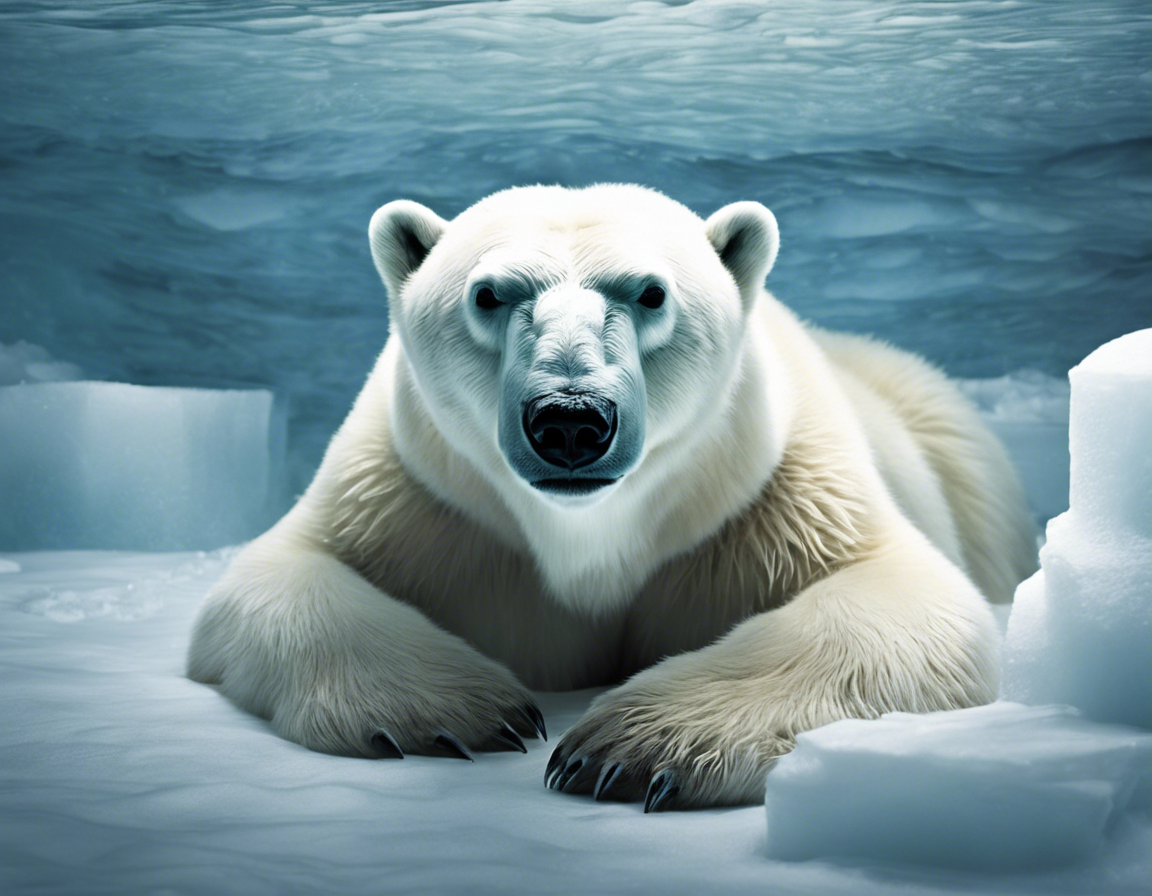Imagine the breathtaking sight of a polar bear gracefully navigating its icy habitat. These majestic creatures are synonymous with the Arctic region, where they reign as the largest land carnivores on Earth. The polar bear’s survival is intricately linked to the frozen landscape it calls home. One remarkable feature of their environment is the ice bed – a platform of ice that serves as a critical component of their existence.
The Polar Bear’s Life on Ice
Polar bears depend on the ice bed for various aspects of their life cycle, from hunting to breeding. The ice bed provides a stable platform for hunting seals, the primary food source for polar bears. These skilled predators use the ice as a hunting ground, waiting patiently at seal breathing holes or stalking them on the ice surface.
Breeding is another vital activity that occurs on the ice bed. Female polar bears dig maternity dens in the snow and ice to give birth and raise their cubs in a protective environment. These dens offer insulation from the harsh Arctic conditions and help ensure the survival of the vulnerable cubs in their early months.
The Dynamics of Ice Formation and Melting
The formation of the ice bed is a complex process influenced by various factors such as temperature, salinity, and ocean currents. Sea ice forms when ocean water freezes, creating a vast expanse of ice that varies in thickness and density. The thickness of the ice bed is crucial for polar bears as it determines their ability to travel, hunt, and establish dens.
Climate change poses a significant threat to the polar bear’s icy habitat. Rising temperatures lead to the melting of sea ice, reducing the availability of hunting grounds for polar bears. As the ice retreats, polar bears are forced to travel longer distances to find food, putting a strain on their energy reserves and impacting their overall health and reproductive success.
Adapting to a Changing Environment
Polar bears are remarkably adapted to their icy environment, possessing specialized features that enable them to thrive in the Arctic. Their thick fur and layer of blubber provide insulation against the cold, while their large paws help distribute their weight evenly on the ice, allowing them to move effortlessly across the frozen terrain.
Despite their adaptations, polar bears face increasing challenges due to climate change. Conservation efforts are crucial to ensuring the long-term survival of these iconic animals. By reducing carbon emissions, protecting critical habitats, and raising awareness about the importance of preserving the Arctic ecosystem, we can help safeguard the future of the polar bear and its ice bed.
FAQs
1. What is the significance of the ice bed for polar bears?
– The ice bed serves as a hunting ground for polar bears and provides a platform for breeding and raising their cubs.
2. How is climate change affecting the ice bed habitat?
– Climate change is causing the melting of sea ice, reducing the availability of hunting grounds for polar bears and impacting their ability to find food.
3. What adaptations do polar bears have for their icy environment?
– Polar bears have thick fur, a layer of blubber, and large paws that help them survive in the cold and navigate the ice bed.
4. What can be done to help protect polar bears and their ice bed habitat?
– Conservation efforts such as reducing carbon emissions, preserving critical habitats, and raising awareness about the importance of the Arctic ecosystem are essential for protecting polar bears.
5. How do polar bears use the ice bed for hunting?
– Polar bears use the ice bed to hunt seals, their primary food source, by waiting at seal breathing holes or stalking them on the ice surface.



